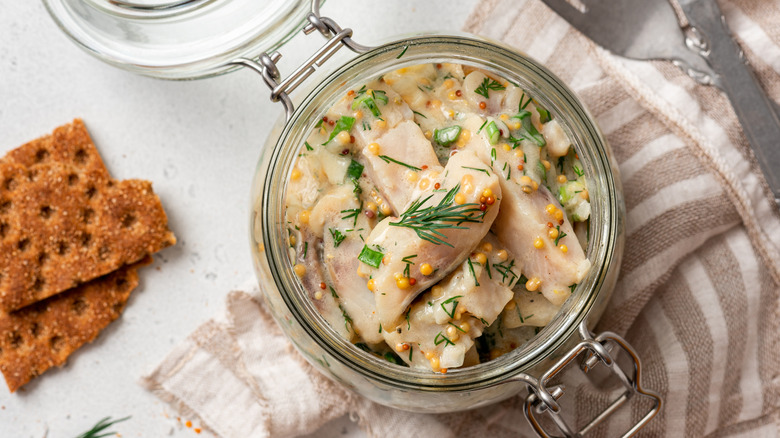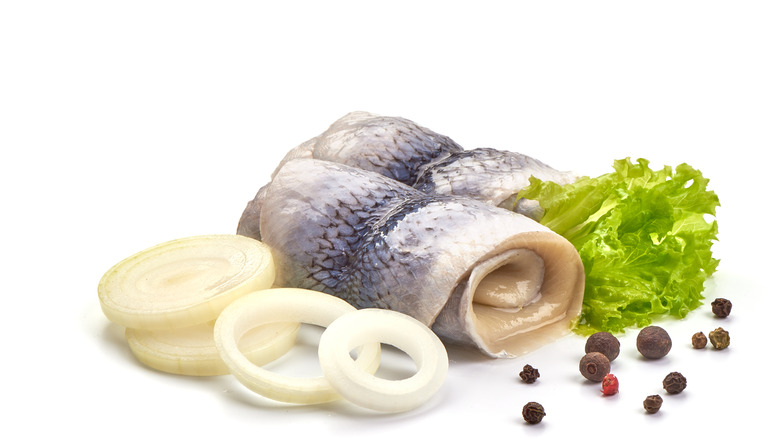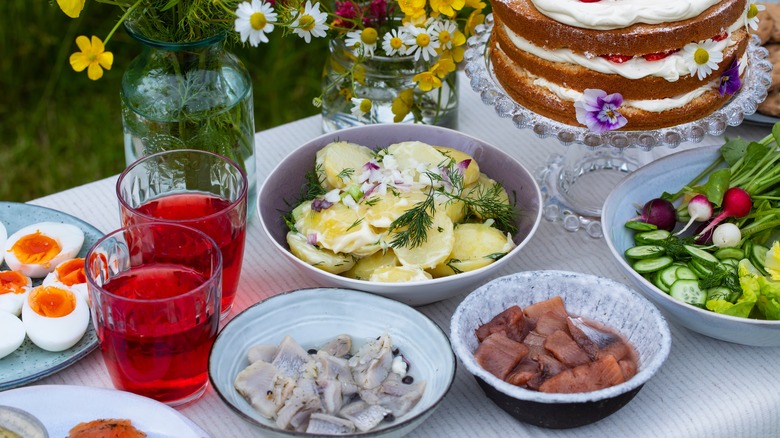Pickled Herring Is The Fish Dish Beloved By Swedish Chefs
Poach, fry, or eat it raw; fish is well-predisposed to a range of cooking methods. And when it comes to chowing down on herring, a small fish native to the North Atlantic, curing it is the way to go.
Traditionally, these abundant fish were salted, creating a fat-laden protein source suitable for long journeys. However, at the start of the 20th century, Swedish chefs started to pickle the herring instead. Vinegar not only retained the fish's flavor, but also functioned as a base to infuse a range of other flavors. The technique became a hit, spreading to other Northern European countries such as the Netherlands, as well as Scandananivan neighbors Denmark and Finland.
In Sweden, pickled herring — called Inlagd Sill — is especially adored, served during summertime feasts. Once mass-produced and discredited, it's turned into a delicious fishy canvas for a range of flavors. Let's dive into how pickled herring comes together.
How is Swedish pickled herring prepared?
Preparation starts with the creation of the pickling liquid. White wine vinegar is poured into a saucepan and heated alongside sugar and a range of spices. Once cooled, its distributed to tightly sealed jars with the filleted herring. After a couple of days, the herring is ready to serve.
Numerous variations exist, especially in seasoning, but there are differences in the preparation technique, too. Some brine the herrings prior to pickling for a different texture. Others forgo the vinegar completely, sticking to the dish's brine-driven roots. The accompaniment of onions is more reliable than the utilized technique. The vegetable cuts through the fish's fattiness and loses its bite after a soak in the delicious pickling liquid.
Further inclusions alter the flavor of the dish as well. Traditional components include dill, mustard seeds, leek, allspice, cloves, and black peppercorns. However, Swedish chefs have started to experiment with flavors that are less typical, such as curry, coffee, and berries. The dish is open to a broad range of interpretations.
How to serve Swedish pickled herring
Pickled herring is enjoyed as an appetizer, a snack alongside drinks, or as part of an entree. It's common to see a plate on a table alongside a more extensive spread, as the dish is essential as part of a midsummer smörgåsbord. Oftentimes, it's simply served on a plate, with toppings like onions and chives. However, it's also commonly draped onto a cracker, especially the rye-based knäckebröd. Rye bread is a frequent accompaniment, too, because its flavor melds well with the fish.
Herring can also be used as a component in prepared dishes. It's rolled in tunnbröd, a lavash like flatbread, alongside creme fraiche and herbs. It can integrated into a creamy potato salad Sillsallad, too, complemented by tart ingredients like onions, pickles, and apples. Swedes also incorporate the fish into pies and cakes like smörgåstårta, made with smoked salmon, cream cheese, and toast.
However, nothing beats enjoying the fish as part of a spread, alongside a glass of aquavit. During such celebrations, varying flavors of fish are often enjoyed at once. There's a contrast of flavors, but it all distills the herring's delicious character.


